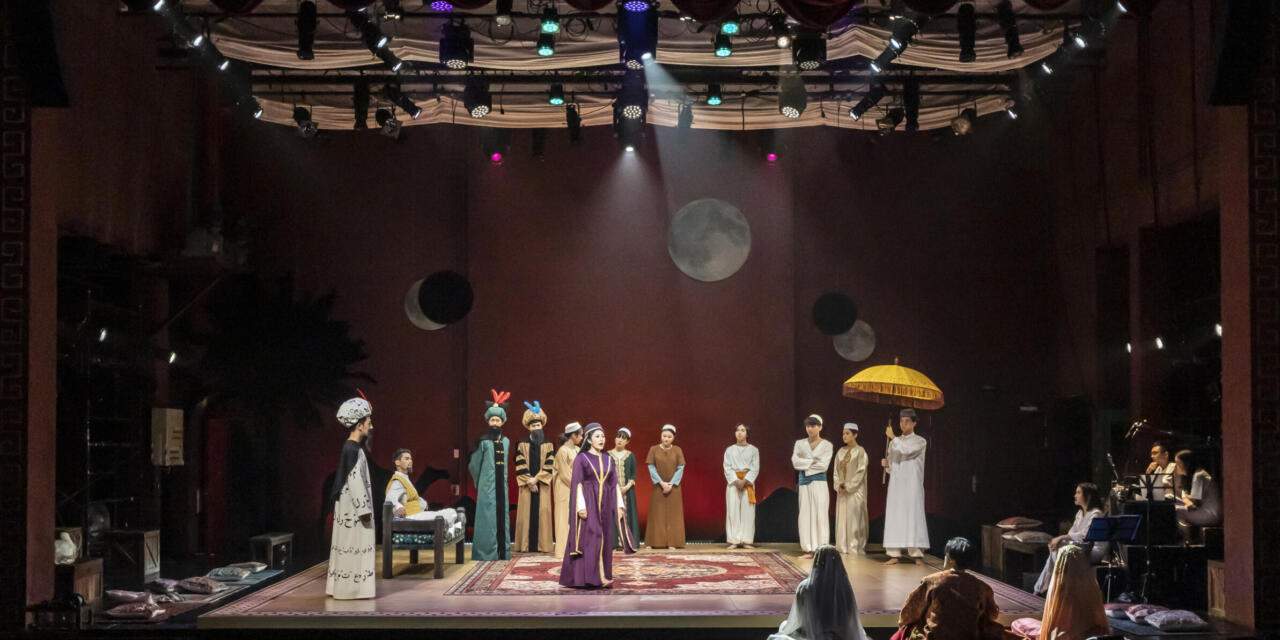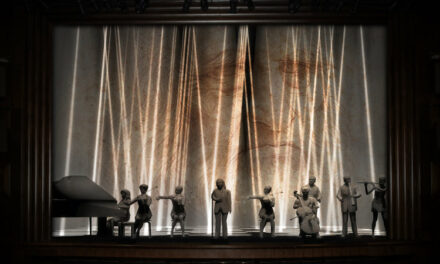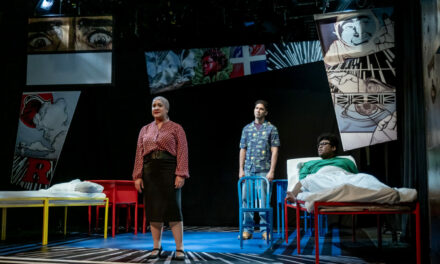Originally a collection of West Asian folktales, The Arabian Nights may be the series of bedtime stories with which many in the West, as little kids, doze off into a good night’s sleep. Their consciousness ebbs away, dreams kick in, and the storytellers’ voices gradually become enchantments that create an exotic world where wish-fulfilling genies, flying carpets, and mysterious women all bear infinite possibilities. These stories mark their first encounter with the East, yet may also be the one and only impression about it. Edward Said introduced the term “Orientalism” to describe such a simplified version of an otherly world imagined by the West, and backlashes and criticisms have never failed to reach it since.
It was from this disputable perspective of the East, or more accurately, of the Islamic world, that American director-playwright Mary Zimmerman found room for a theatrical adaptation and rewriting of The Arabian Nights. From a general perspective, Zimmerman preserves the frame story of the original text: Scheherazade is still the narrator of the one thousand and one tales, and Shahryar, is the listener. What highlights Zimmerman’s version is that she ends it with a coda full of sounds of explosions and sirens, in parallel with the continual warfare in West Asia. By blending ancient fantasy into a modern political context, she provides another reason for telling these stories. It is obvious that she finds it unsatisfactory how the East is otherized in the Western discourse: the Islamic world is either a region that accommodates the desire of the West or a land that is packed with terrorists and needed to be saved by the West.
Po-Shen Lu, a Taiwan-based director who runs the Tainaner Ensemble and teaches directing at National Taiwan University, staged Zimmerman’s version as the annual production of the school in 2022. On the spot, the production was dazzling and entertaining. The set was almost bare, with only an embroidered carpet and a wooden couch on it. On the back were silhouettes of dunes, palm trees, and camels, and in the air were three suspended moons. Triangles chimed, lights dimmed, and an ensemble cast in Islamic clothing lured us into the magic of philosophical parables and spectacular choreography. As the play gravitated towards the end, images of bombarded lands and crying children began popping up on the back wall. The projections were used to awaken the audience with a message: what had been played onstage was only an illusion while what was shown at the moment was the reality of the East.

However, since Zimmerman’s version is targeted at an audience different from Lu’s, it is questionable whether Lu’s production was as powerful as the ones staged in the West. As an American playwright, the majority of Zimmerman’s audience is anglophone. Thus, the playwright and her audience share and communicate in one language, in both literal and metaphorical senses. Writing against common stereotypes and reflecting on how the West has caused conflicts and tumults in the East, Zimmerman has the power to unsettle her Western audience with the realistic final scene, and it is this self-reflexive insight that makes her version significant. Even with an attempt to overcome cultural gaps through translation, Lu overlooked the fact that Zimmerman’s version was originally designed for an audience unlike his, thus losing the power to awaken and unsettle. With the production team and audience members all belonging to the East, Lu’s production seemed much of a missionary work for the Western voice.
Some may argue that they still find Lu’s production resonating and the ending shocking, and it is even more interesting how Lu’s production achieved the goal. Globalization, which often is another word for Americanization, might be the answer. Considering that contemporary Western philosophy and avant-garde theatre were both introduced to Taiwan in the second half of the 20th century, it is possible that the theatre audience since the millennium has been shaped highly by Western discourses. Therefore, it is not surprising to find some audience members cheering for Lu’s production because they have inherited their sensibility from the Western mindset and vision.
Aesthetically and visually speaking, Lu might have done wonderful work staging Zimmerman’s version, but it may also be viewed as an imposition of how the West has seen and sees the East. With the production taking place in Taiwan, it would have been better if there had been a more intricate discussion on the relations between the East and the West. Nevertheless, if we were only looking for entertainment in theatre, The Arabian Nights definitely offered a light-hearted and tear-jerking experience.
(Kuan-Ting Lin is a translator and dramaturg based in Taiwan.)
This post was written by the author in their personal capacity.The opinions expressed in this article are the author’s own and do not reflect the view of The Theatre Times, their staff or collaborators.
This post was written by Kuan-Ting Lin.
The views expressed here belong to the author and do not necessarily reflect our views and opinions.


















